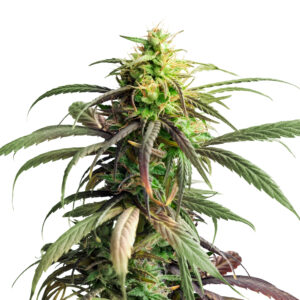 By:
Amos Mwaniki
By:
Amos Mwaniki
You put in time and effort, growing your cannabis plants. You have a watering schedule. You have your lighting set at just the right height. You have been feeding them nutrients at the right time. So why do they have limp, yellow leaves and are drooping? You may have a condition called nutrient lockout. Read this guide in order to identify a nutrient lockout and learn some tips, which can help you to stop it.
Nutrient lockout is when your cannabis plants are unable to absorb the nutrients that they need to be healthy. Something has happened, which stops your plants from taking the nutrients they need from the medium that you are growing in. This means that your plant is essentially starving. If not taken care of, nutrient lockout can have a negative effect, on the yield of your cannabis plants. It can also lead to poor health and death.
Nutrient lockout has basically, the same symptoms as nutrient deficiency. Essentially your plant is being deprived of nutrients. Your plant is not absorbing any nutrients from the soil. Adding more nutrients may be pointless until you figure out what the issue is. If you have fed it enough nutrients and you still have the same symptoms, you will want to take action against a nutrient lockout.
There are two primary causes of nutrient lockout:
Over-feeding your plants with a nutrient solution, or fertilizer, with high salt content can be problematic for your marijuana. The salts can build up in the soil and, over time, stop the plant from absorbing any nutrients.
The pH of your soil, water, or solutions can also cause an issue. If the environment has become too acidic or alkaline, the plant will also enter Nutrient lockout. Test your soil, water, and nutrients. Cannabis grows best with the following pH levels: soil: 5.6 to 6.8, water: 6.0 to 7.0, and hydroponic solutions: 5.5 to 6.5. You can use a product that adjusts your pH up or down in order, to correct this.
Once you have determined that you have a nutrient lockout, it is important to act quickly; otherwise, your plants could die.
Once you have identified nutrient lockout in your cannabis plants, you will need to do the following:
You want to stop the introduction of new nutrients to the plan while you follow these steps. It will do no good to keep giving the plants nutrients at this point.
You will want to pH balance your water and really soak the soil with it. This will help to dissolve all the salts and nutrients in the soil. Once they are in the solution you can continue to flush the soil with water. Ideally, you want to break down any build-ups in the soil and cause them to be taken away with the water that you are using. You should have some holes in the bottom of your pots for excess water to drain out of. These will come in handy now.
Once you have completed the flush, you will need to let the soil dry out. Keep an eye on it. This could take a while. If you do not let the soil dry out, you could be allowing root rot to set in.
Use only pH-balanced water for the next few times you water your marijuana plants. It is important to make sure that any salt and nutrients that remain after the soil flush, will now get flushed out. After you do this you may go back to using the appropriate nutrient schedule.
You know what nutrient lockout is. You know how to fix it. How do you prevent nutrient lockout in the first place? Preventing nutrient lockout involves many of the same steps as fixing it. Follow these simple steps to prevent nutrient lockout in your cannabis plants:
Check the pH levels of your plants, soil, and water, every time you water. If the pH levels are off, you can use pH Up or pH Down in order to balance them.
Many commercial, non-organic, nutrient solutions and fertilizers are salt-based. These compounds tend to build up in the soil and cause nutrient lockout. If you get a low salt compound or an organic one, you can help to alleviate the possibility of a nutrient lockout.
If you are using a lot of nutrients, take time to flush out your plants once in a while. This will help to decrease any build-ups, which can cause nutrient lockout in the first place.
We have discussed nutrient lockout and what can cause it. We have explored ways in which you can fix it and the ways to prevent it. I hope that you are able, to use the information on nutrient lockout in this guide, to improve your growth and yields.













Related Posts

Growing marijuana requires more than just sticking a few cannabis seedlings into the soil and waiting for its buds. In addition to carefully tracking its growth, cannabis demands a lot of careful tendering.

Seaweed is a highly nutritious and natural fertilizer for your cannabis plant. It is packed with beneficial nutrients and vital minerals that ensure maximum health, vitality, growth, and high yields. Seaweed extracts are especially beneficial for your cannabis plants, as they protect them from defects that can ruin their health. So you get bigger, stronger, and well-developed plants. For instance, Kelp, an algae seaweed, possesses more than 60 trace elements that boost the health of your cannabis plants and improves their tolerance to pests, diseases, and stress!

Cannabis growers experience a wide variety of challenges during their growing journey. However, having little knowledge about research, these problems can get solved easily without much straining. One of these significant issues is Manganese deficiency, which has become a rampant case terrorizing cannabis growers.